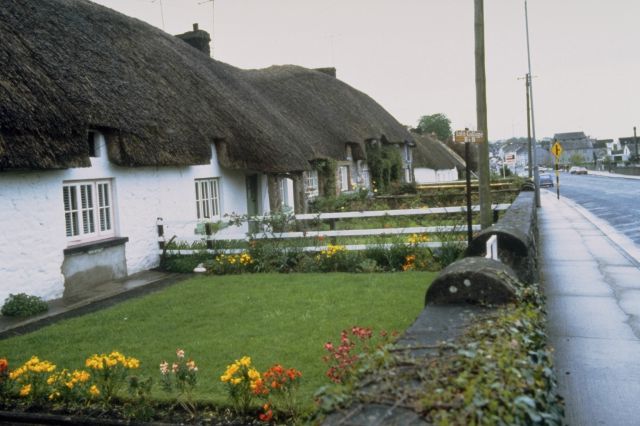
The origin of Galway is uncertain. However, the ancient Irish called foreigners ‘na Gall’, hence the suggestion that Galway was ‘the place of foreigners’.
After the Anglo-Norman invasion in the 13th century the power of the city was divulged to 14 'Tribes', affluent families of English descent, and the city became known, famously, as the 'City of the Tribes.
Tourist Attraction
Eyre Square (renamed John F Kennedy Park) ; an open green park where on can relax or view the many attractions, including ;
Statue of Paraic O’Connaire ; erected in 1935 in memory of the writer who travelled the roads with his horse and cart. Best remembered for M’asal Beag Dubh. Died 1928.
Cannons ; These cannons were presented to the Connaught Rangers at the end of the Crimean War 1854-1856. The Rangers had played a major part in the Alma Valley Battles in 1854.
The Fountain ;. built in 1984, consists of a copper-coloured representation of the sails of the Galway Hooker. This was a traditional fishing boat, unique to Galway.
The Spanish Arch ;built in 1584 and located on the banks of the Corrib, an extension of the city walls that protected the quay
City Museum ; situated into one of its walls of the Spanish Arch, displays
antiques and implements
that were used in Galway many years ago
Lynch's Castle ; a fine stone building and a townhouse which dates back to the 14th century. Mayor Lynch, reputed to have hanged his son for murder.
The Cathedral of Our Lady Assumed into Heaven ;opened in 1965 and built on the site of the former county jail. This jail was closed in 1939 and known for its cruel treatment of prisoners..
Collegiate Church of St Nicholas of Myra, establishes as a collegiate church in 1484, with its curious pyramidal spire, is Ireland's biggest medieval parish church. It contains many unique features such as the tomb of the famous
National University of Galway, established as one of the Queens' Colleges in Ireland in 1845 and it officially opened in 1849. The oldest and prettiest part of the college (the "Quadrangle") is a replica of the corresponding building at Oxford University.
More Information on Galway
· Go Back
